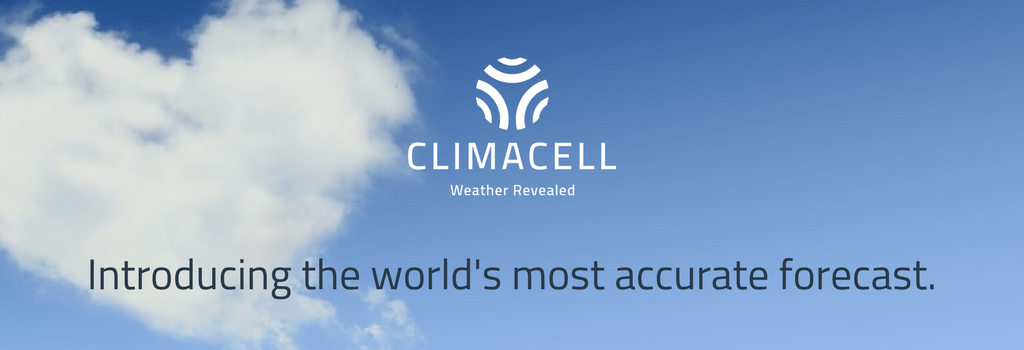Have you ever wondered if you could receive an alert for rains or snow outside while working inside your office? Or if you could check the temperature where your mother lives whom you are about to visit and could prepare accordingly. You can always check the weather app on your phone, but there is always a 50-50 chance that the data could be inaccurate.
ClimaCell is a weather intelligence company based out of Boston that can change that. The company offers minute-by-minute forecasts for any particular location in over 50 countries. The company uses the latest technological innovations, which have revolutionized the weather forecast industry.

The start-up was founded in 2015 in Israel, but its headquarters are in Boston now. The company combines traditional methods of accumulating weather-related data with information drawn from several other devices connected to the Internet. That means for any localized region, ClimaCell gets weather-related information from millions of devices.
ClimaCell describes it as the “Weather of Things” as the technology has been derived from the “Internet of Things.” Consumers can avail of this weather data from the mobile app and the newly-launched weather page on the website.
The secret to ClimaCell’s accuracy and success is not just a collection of data from millions of devices. The company has recently tied up with Google’s cloud computing services to provide micro-forecasting to customers who need accurate climatic data.
The new cloud computing capability allows the company to process the data gathered from multiple sources and get highly accurate results that can be refreshed minute by minute.
As we mentioned before, ClimaCell can provide extremely localized weather information because it procures data from unconventional sources such as drones, vehicles, traffic cameras, cellular network signals, and almost every smart device in a particular location.
This humongous amount of data needs substantial computation to achieve the desired results. That is why ClimaCell is using the global API platform provided by Google’s C2 instances. The platform offers up to 3.8 GHz of computing power from the second generation Intel Xeon Scalable CPUs.
Spokespersons at ClimaCell have stated that the latest upgrade from N1 instances to Google Clouds C2 has increased the company’s computing power by more than 40%. The current computing capabilities also offer better flexibility to the company to manage the data and acquire the required results.
They have been able to utilize this added performance to get a range of new clients that includes a few well-known airline services and Uber. Several other industries also use their weather data to manage their everyday operations.
For example, many football teams in the United States use ClimaCell’s weather forecasting services to plan training sessions, games, and field management. Announcers at Chicago Cubs Games were able to offer weather analysis using their weather data during a recent Major League Baseball season.
We can expect big things from ClimaCell in the future as well. For several countries like India, it is the first time that a stand-alone company can offer accurate weather forecasts for up to 48 hours in advance, that too free of charge. The company also invites its customers to join them in making weather data accessible to everybody.
ClimaCell’s weather forecast page and mobile application provide the usual climatic data such as temperature, chances of precipitation, and humidity. They also offer several other additional information such as visibility, wind details, dew point, air quality, and pollen spread. These additional data are essential for many users and industries.
For example, healthcare professionals and patients can use air quality and pollen index data to prepare themselves for asthma, COPD, and pollen allergies. People can avail all this information for any localized area, such as a street or a city block.
ClimaCell’s micro-forecast model is ideal to address the nuances of localized climates for various geographical locations. The company is also working to customize its weather forecast model for several other regions in the future.
People in America have been relying on government agencies like NOAA for a long time to get accurate weather data. However, traditional satellite and radar-based weather forecasting methods had some inherent flaws. These methods were unable to accurately predict localized weather because satellites and radar cannot zoom in so far.
Utilizing data from devices connected to the Internet, along with Google’s cloud computing power enables Climacell to provide micro-forecasted weather data like never before. We are sure that using the latest technological advancements, ClimaCell’s will offer several other solutions for user demands related to the climate and weather.